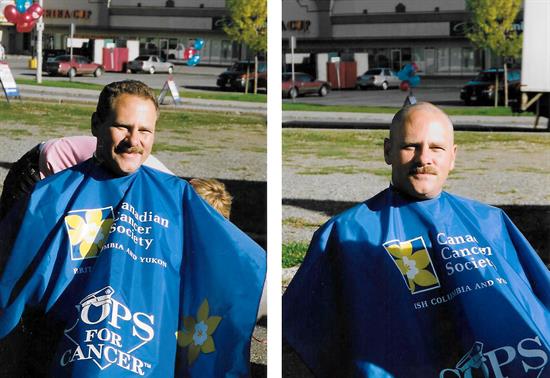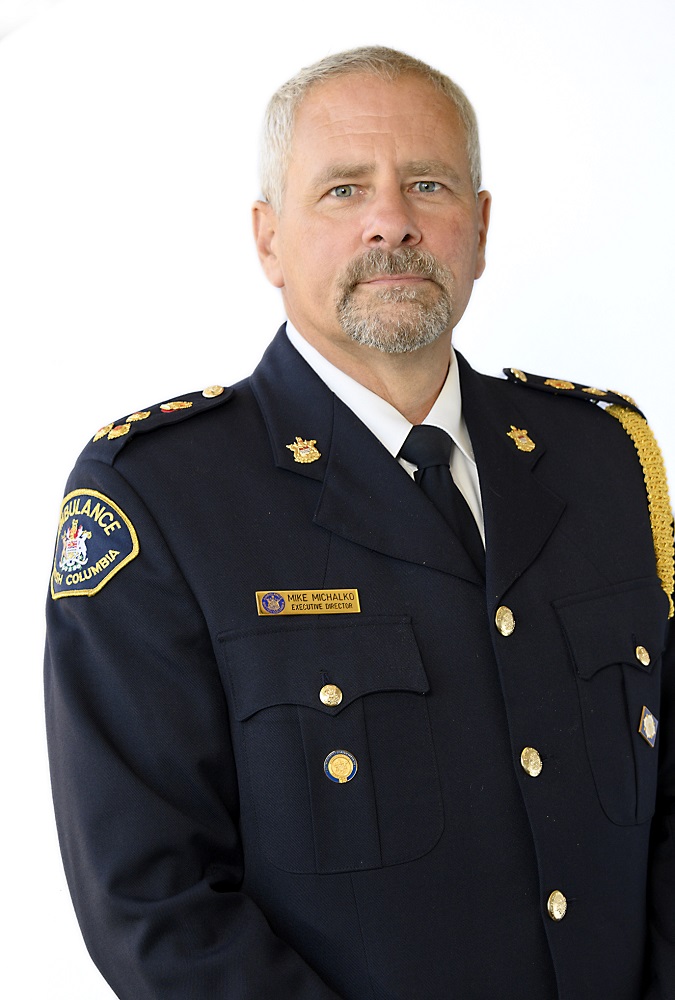by Lesley Pritchard
In 1984, when Mike Michalko was 19 years old, he agreed to follow in his father’s footsteps and be part of a vital new community service. His dad, the late Mike Michalko Sr., was among a dozen northern B.C. residents who agreed to serve as Bella Coola’s first-ever emergency medical responders as part of the rapidly growing BC Ambulance Service.
Mike has vivid memories of those early days. He remembers the rudimentary equipment, low pay, no dispatch centre to support communication, and a dilapidated old ambulance.
“If you lifted up the rubber floor mat, no word of a lie, you could see the street underneath it! That’s how rusty and old it was.”
There were few safety standards or training to guide their work and keep them safe. Mike recalls paramedic crews doing their own patient extrications from vehicles with no special equipment, and there was no extra pay to carry a pager, with ambulance crews only getting paid if they responded to a call.
Despite the challenging working conditions and low pay, Mike thrived on the special moments that came from helping patients. So, even after leaving Bella Coola to pursue a university degree in commerce and statistics and getting a full-time job with the B.C. government, he continued to work part-time as a paramedic. He also became deeply involved with union activities, serving as regional vice president and on the executive board, working on collective agreements to improve wages, benefits and working conditions.

Mike Michalko Sr, and Jr, in 1985
Mike suffered two serious back injuries in his career. Back injuries were common among the profession for many years, often the result of lifting patients off the ground and putting heavy stretchers into ambulances. After transitioning to a full-time position as a unit chief for 10 years in Valemount, Mike eventually moved to Prince George and was steadily promoted into senior management and executive positions where he found he could lead teams to make an even bigger impact on the health and safety of fellow paramedics.
“My personal journey has always been about our people, and safety. Looking after our staff as much as we look after our patients. I’ve been involved in a lot of projects related to paramedic safety including the stretcher program – our whole journey to power stretchers and power loaders, which dramatically reduced the rates for musculoskeletal injuries. That was a massive project for me for three years.”

Michalko had his head shaved as part of the Tour de North, Cops for Cancer fundraiser.
Along with his passion for health and safety, Mike is well known for leveraging his affinity for numbers and data, painstakingly working with his teams to analyze information and put together reports to support a new initiative, a budget priority, a policy change or anything else he believes is necessary to make improvements at BCEHS. Along with helping to build a case for the $33 million investment needed to convert manual stretchers into power stretchers and loaders in 2017 to improve the physical health of employees, Mike has led many initiatives related to mental health. He's often had to do the work “off the side of his desk” while still carrying out his operational roles in the Northern and Interior districts. Mike says he’s watched too many colleagues harmed and broken by the stresses of the job and the lack of meaningful support.
“Young people come to us, they’re bright, they’re shiny, and I think, wouldn’t it be nice if they leave this organization the same way when they’re done?”
Mike has steadfastly championed the growth of the Critical Incident Stress Management (CISM) program and related resources, BCEHS’ involvement in the BC First Responders Mental Health Committee, new CSA workplace standards for paramedics through the Mental Health Commission of Canada and has been a driving force in leading the foundational work for BCEHS’s health and wellness program structure.
Mike is enthusiastic about many of the other changes he’s seen in his 40 years with BCEHS, including the evolution of paramedicine, improved training, more full-time positions, strong safety policies, a sophisticated dispatch process with a clinical hub to support paramedics in the field, and of course, better vehicles.
“Back in the day, when I toured a station, the number one thing staff complained about was vehicles. Today, you look at the investments in new vehicles and the work that the fleet team does in maintaining, equipping and cleaning ambulances, and we hardly hear a word anymore about vehicles. There are also the improvements we’ve made with our air ambulance fleet, and the further aircraft improvements coming on board will be dramatic.”
As he reflects on the future, Mike smiles when he thinks about new generations not having to relive his first glance inside an ambulance, and the other dangers paramedics faced in the past.
“So much foundational work has been done in the last 50 years and I am so proud to have been a part of the teams and able to contribute and serve. I feel as a service we are going to land our employees – and the care of our patients – in such a realm that they will have a hard time understanding what it was like to look inside an ambulance and pick up the rubber floor mat and say, ‘Oh my God, I can see the pavement!’”
Mike is currently BCEHS’ Senior Provincial Executive Director of Strategic Initiatives.

